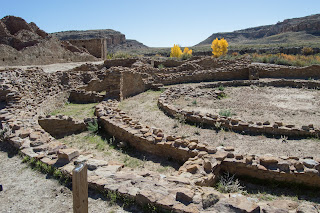Solo dresses are usually made out of high quality fabrics, such as heavy satin or velvet. They are traditionally embroidered with elaborate designs taken from the Book of Kells and accented with rhinestones, sequins, and all things glittery. For competitions, there are rules surrounding the dresses, and performance in the competition can be affected by the dress. The dress always has a cape in back, long sleeves, high neckline, and skirt above the knee. Styles and fashions for the dresses are constantly changing, most recently with increasing amounts of sparkles, brighter colors, and shorter skirts. A few examples of past and current styles:
Past:
Current:
^ back view
My failure:
In Irish dancing, you're supposed to dance with your arms and shoulders back. I could not do so very well in my dress. I actually ripped a bit of the collar trying to do so. The skirt was too long. It was very loud when I tried dancing in it. I didn't use a pattern, instead using a dress I already had and tracing its parts onto the butcher paper, so measurements were a bit off and some things didn't match up right. I had to re-fold the skirt several times to get it to the right width to fit the dress. The whole thing is held together with scotch tape. My dress mostly fits the current style of dress, but for the skirt length. I don't have elaborate celtic designs on it, but the designs I have would be appropriate for competition.
Inside view:















































